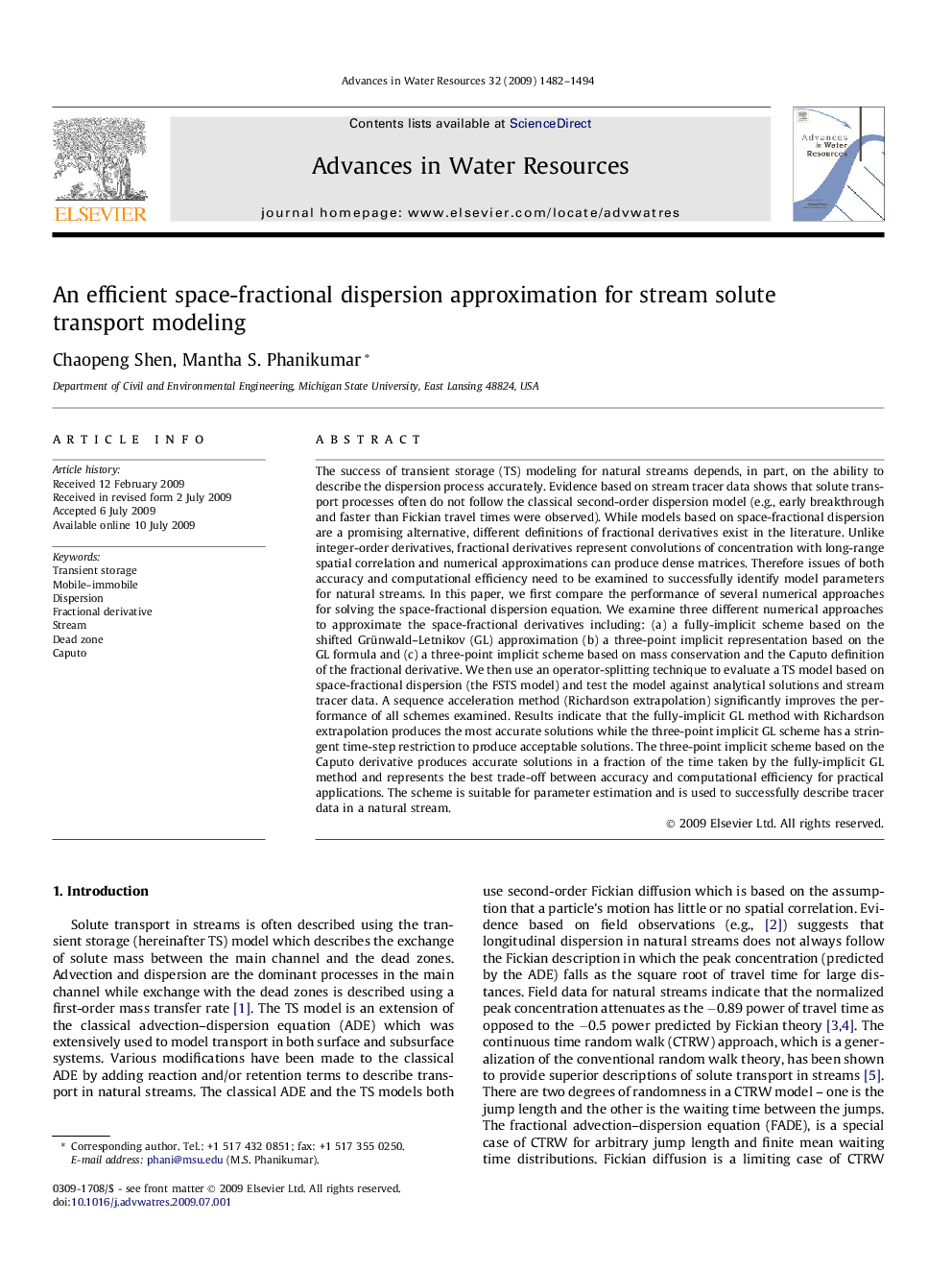| کد مقاله | کد نشریه | سال انتشار | مقاله انگلیسی | نسخه تمام متن |
|---|---|---|---|---|
| 4526480 | 1323839 | 2009 | 13 صفحه PDF | دانلود رایگان |
عنوان انگلیسی مقاله ISI
An efficient space-fractional dispersion approximation for stream solute transport modeling
دانلود مقاله + سفارش ترجمه
دانلود مقاله ISI انگلیسی
رایگان برای ایرانیان
کلمات کلیدی
موضوعات مرتبط
مهندسی و علوم پایه
علوم زمین و سیارات
فرآیندهای سطح زمین
پیش نمایش صفحه اول مقاله

چکیده انگلیسی
The success of transient storage (TS) modeling for natural streams depends, in part, on the ability to describe the dispersion process accurately. Evidence based on stream tracer data shows that solute transport processes often do not follow the classical second-order dispersion model (e.g., early breakthrough and faster than Fickian travel times were observed). While models based on space-fractional dispersion are a promising alternative, different definitions of fractional derivatives exist in the literature. Unlike integer-order derivatives, fractional derivatives represent convolutions of concentration with long-range spatial correlation and numerical approximations can produce dense matrices. Therefore issues of both accuracy and computational efficiency need to be examined to successfully identify model parameters for natural streams. In this paper, we first compare the performance of several numerical approaches for solving the space-fractional dispersion equation. We examine three different numerical approaches to approximate the space-fractional derivatives including: (a) a fully-implicit scheme based on the shifted Grünwald-Letnikov (GL) approximation (b) a three-point implicit representation based on the GL formula and (c) a three-point implicit scheme based on mass conservation and the Caputo definition of the fractional derivative. We then use an operator-splitting technique to evaluate a TS model based on space-fractional dispersion (the FSTS model) and test the model against analytical solutions and stream tracer data. A sequence acceleration method (Richardson extrapolation) significantly improves the performance of all schemes examined. Results indicate that the fully-implicit GL method with Richardson extrapolation produces the most accurate solutions while the three-point implicit GL scheme has a stringent time-step restriction to produce acceptable solutions. The three-point implicit scheme based on the Caputo derivative produces accurate solutions in a fraction of the time taken by the fully-implicit GL method and represents the best trade-off between accuracy and computational efficiency for practical applications. The scheme is suitable for parameter estimation and is used to successfully describe tracer data in a natural stream.
ناشر
Database: Elsevier - ScienceDirect (ساینس دایرکت)
Journal: Advances in Water Resources - Volume 32, Issue 10, October 2009, Pages 1482-1494
Journal: Advances in Water Resources - Volume 32, Issue 10, October 2009, Pages 1482-1494
نویسندگان
Chaopeng Shen, Mantha S. Phanikumar,